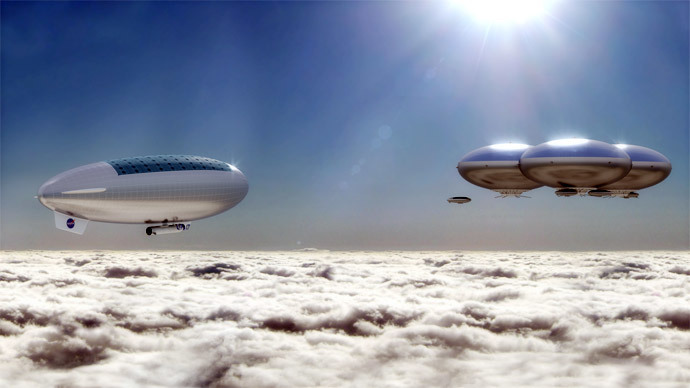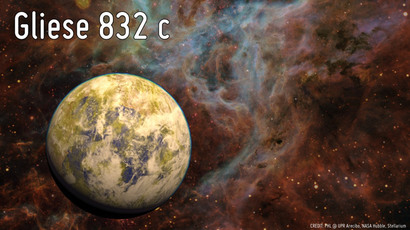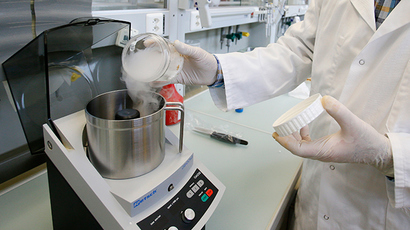Cloud castles: NASA wants to deploy manned solar-powered airships to Venus

Despite its hellish surface, Venus turns out to be quite an attractive planet for exploration. NASA scientists are developing a project of conquering its upper atmosphere – a fleet of solar-powered aircraft may build up a whole cloud city in the future.
The challenging conditions on Venus’ surface – that is, 92 Earth’s atmospheres of pressure, the sulphuric acid rain with lightning bolts and temperatures of nearly 500 C – made scientists literally turn to cloud castles. This idea has been recently developed in NASA’s High Altitude Venus Operational Concept (HAVOC) mission that is set to send a series of missions to the planet.
“The vast majority of people, when they hear the idea of going to Venus and exploring, think of the surface, where it’s hot enough to melt lead and the pressure is the same as if you were almost a mile underneath the ocean,” aerospace engineer at NASA Langley Research Center Chris Jones told IEEE Spectrum magazine. “I think that not many people have gone and looked at the relatively much more hospitable atmosphere and how you might tackle operating there for a while.”
READ MORE: Life on Mars more likely? Curiosity discovers methane, other organic chemicals
First, HAVOC is set to send a robot to explore the atmosphere of Venus. It could be followed by a manned mission to orbit and a mission to the planet’s atmosphere – both would include a 30-day stay. Later on, a crew of two astronauts would spend a year in the atmosphere, and someday a whole human colony in a cloud city might be established.
The remarkable vehicle that would carry out the mission is designed to be nearly 130 meters long, with a small 21-cubic-meter habitat for the crew and its top covered with more than 1,000 square meters of solar panels. As Venus is the second closest planet to the Sun, it gets 40 percent more solar power than the Earth – and 240 percent more than Mars.

“Traditionally, say if you’re going to Mars, you talk about ‘entry, descent, and landing,’ or EDL,” explained NASA scientist Dale Arney. “Obviously, in our case, ‘landing’ would represent a significant failure of the mission, so instead we have ‘entry, descent, and inflation,’ or EDI.”
“Venus has value as a destination in and of itself for exploration and colonization,” said Jones. “But it’s also complementary to current Mars plans.” He added, “There are things that you would need to do for a Mars mission, but we see a little easier path through Venus.”
READ MORE: Infertile Field of Mars? Colonization plans marred by gravity, radiation fears
The astronauts on the Venus mission are unlikely to leave the aircraft, so – 50 kilometers from the planet’s surface – it would be safer than the expedition to Mars. According to the scientists, they would be studying the planet’s advanced greenhouse effect to better understand the Earth’s possible future.















